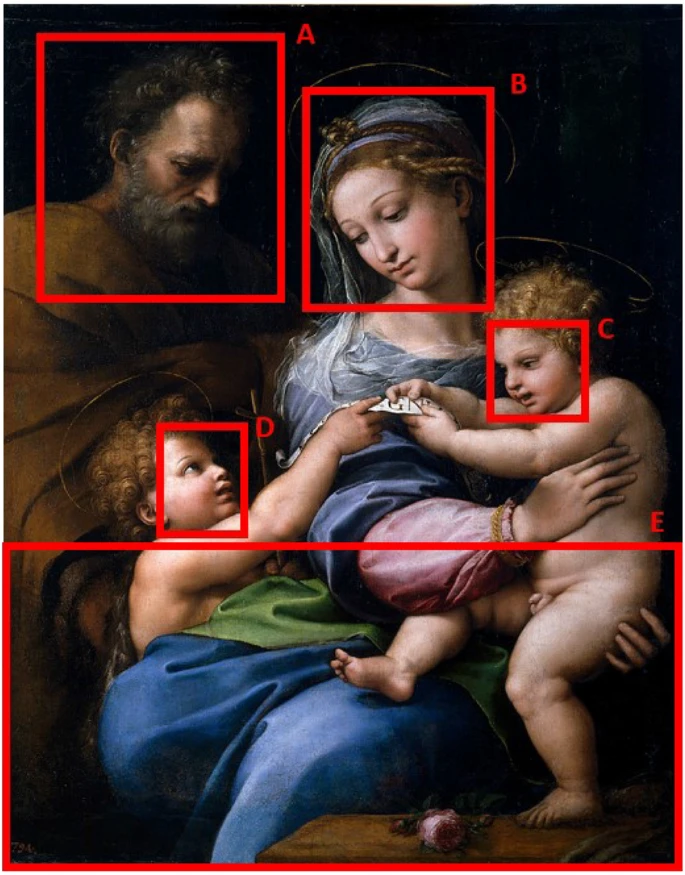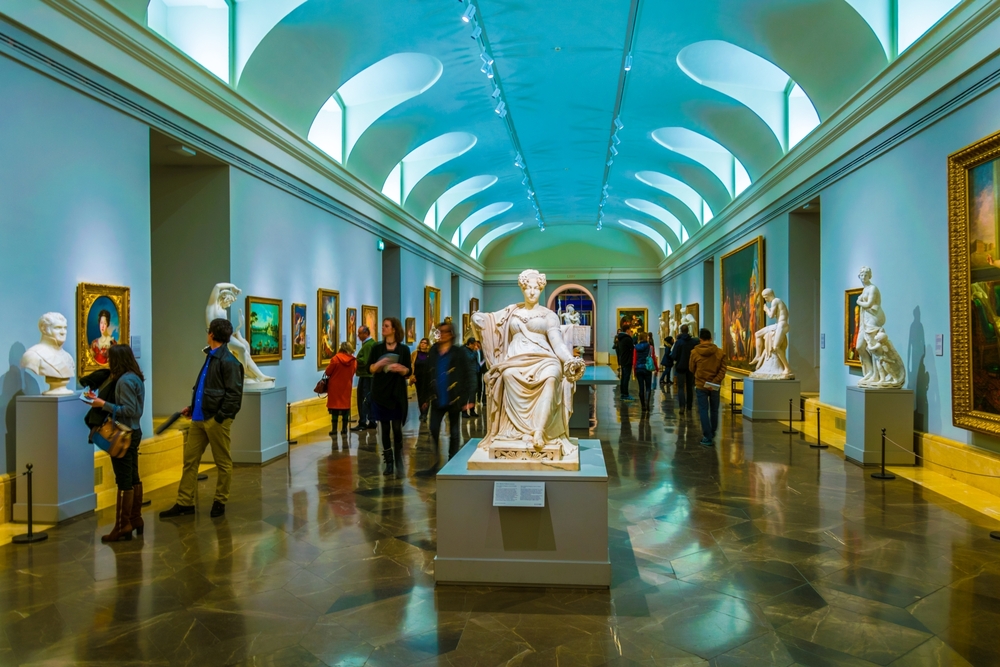For centuries the debate has been ongoing as to whether or not Raphael was indeed the artist behind a Renaissance painting called Madonna della Rosa. Researchers used machine learning to solve the mystery.
When art historians endeavor to attribute a painting to an artist their decision involves a host of tests. They check the chemical makeup of the materials, take X-ray scans, track down the provenance, and have experts pore over the minutest details in the painted scenes.
Even after all of that, some paintings like the Madonna della Rosa still have experts arguing over who painted it.
The strong suspicion was that the painting was the work of Renaissance master Raphael, but there were elements in the painting that were cause for doubt.
The Madonna della Rosa is a painting of Mary, Joseph, Jesus, and a baby John the Baptist. The areas that some experts suspected were painted by a different artist were the head of Joseph and the rose at the bottom of the painting.
Let AI take a look
University of Bradford Professor Hassan Ugail developed a machine learning model to analyze the painting to confirm whether or not Raphael was indeed the artist.
Ugail’s model used deep transfer learning applied to the ResNet50 deep neural network. ResNet50 is widely used in image recognition tasks because it’s really good at learning complex patterns in images.
ResNet50 is already pre-trained on a large dataset of images. Transfer learning is a machine learning technique where a model developed for one task is reused as the starting point for a model on a second task. This technique is especially helpful when you have limited data for the new task.
Ugail used the pre-trained ResNet50 as a starting point and trained it further on 49 paintings that were confirmed to be by Raphael. As a result, the model became an expert on Raphael’s work, from his particular brushstrokes, choice of colors, and compositions.
Ugail says the model can recognize authentic pieces with an accuracy of 98 percent.
Who painted it?
When the researchers applied the model to the Madonna della Rosa it suggested that there was only a 60% likelihood that it was the work of Raphael.
Not great news for Madrid’s Prado gallery which insists their painting is an authentic Raphael work.
When the model was used to analyze specific areas of the painting, the truth behind its creator emerged.

The model concluded that the areas incorporating Mary, Jesus, John the Baptist, and even the suspect rose, had a 90% probability of being painted by Raphael.
As suspected, Joseph’s head was likely painted by a different artist, as the model gave it a less than 40% probability of being the work of Raphael. When a visitor to the Prado gallery asks if Raphael was indeed the artist who painted this work the curator can confidently answer, “Mostly.”
Co-author of the paper, Professor Edwards, Emeritus Professor of Molecular Spectroscopy, University of Bradford, said, “The AI program analysis of our work has demonstrated conclusively that whereas the three figures of the Madonna, Christ Child and St John the Baptist are unequivocally painted by Raphael, that of St Joseph is not and has been painted by someone else – possibly by Romano, as believed by zur Capellen and others.”
This research could be applied to other contested works as long as there are sufficient examples of confirmed works to use as a training dataset. Co-author Professor Christopher Brooke, University of Nottingham, said this novel approach to attributing artworks “is adaptable in that works by other artists may be examined using the same technique, and this is the goal of future research.”
AI is unlikely to take jobs of art historians and this method can’t be relied on exclusively to determine the correct attribution of artworks.
Stanford University Adjunct Professor David G. Stork, who also co-authored the paper, said, “Computer methods are slowly but surely proving they can aid traditional humanistic studies of art, but they must always be employed with a deep understanding of art historical context, and their results understood and interpreted in the broader context of art knowledge relevant to the problem at hand.”
Machine learning won’t replace art historians but it will be a great help in settling some age-old arguments.





